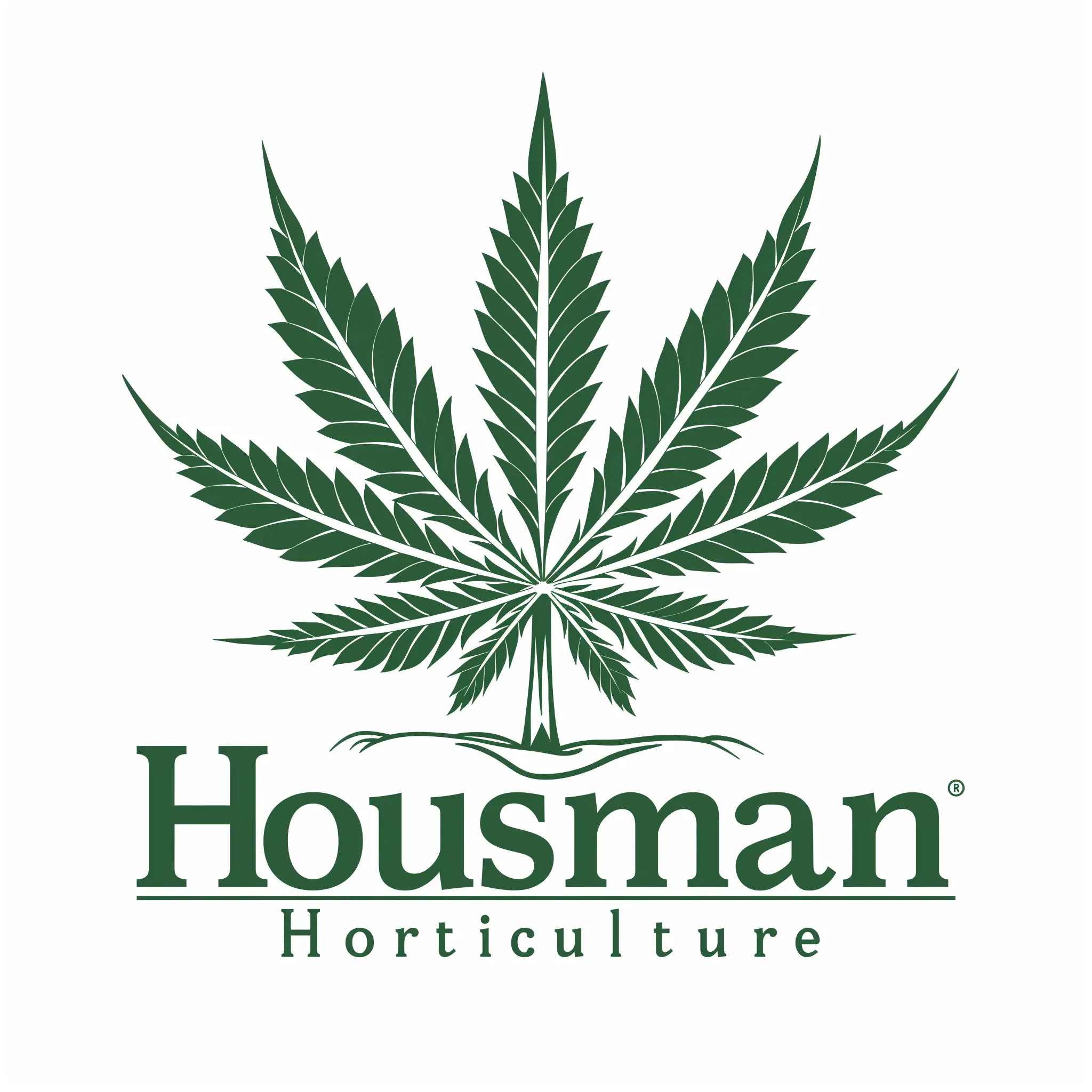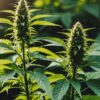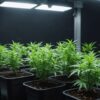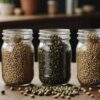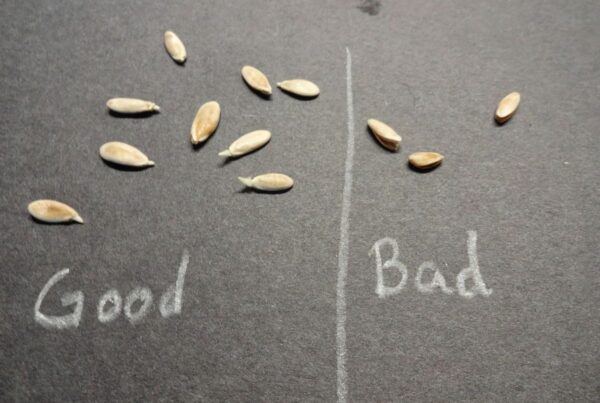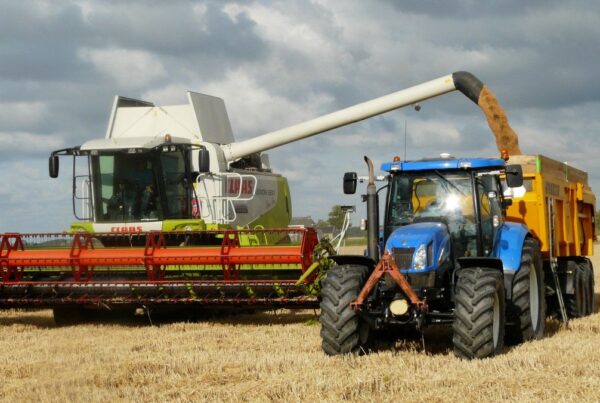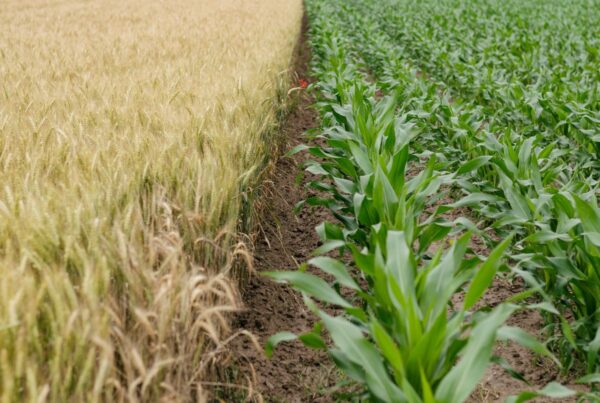The realm of advanced genetics and breeding is a fascinating fusion of biology, technology, and statistics. This field is instrumental in shaping the future of agriculture, medicine, and biodiversity conservation. By delving into the intricacies of genetic variation and selection, scientists and students alike can propel the development of desirable traits in both plants and animals, ensuring food security, advancing health, and preserving our natural heritage.
Key Takeaways
- Quantitative and population genetics are central to animal breeding, providing a framework for improving health and production traits.
- The integration of genomics, metagenomics, and CRISPR-Cas systems is revolutionizing agricultural genetics, leading to more resilient and productive livestock.
- Tailoring a genetics degree to one’s interests allows for specialization in areas such as evolutionary genetics, human genetics, or quantitative genome analysis.
- Real-world applications of animal genetics are vital for enhancing food security, improving companion animal health, and supporting wildlife conservation efforts.
- Emerging innovations in statistical genetics and genome editing are setting the stage for breakthroughs in breeding practices and genetic disease management.
The Gene Pool Party: Diving into Quantitative Genetics

Crunching Numbers with Population Genetics
Hey there, fellow green thumbs and number crunchers! Let’s talk about the magic of population genetics in our world of cannabis cultivation. It’s all about the numbers, baby! We’re not just growing plants; we’re cultivating data points in a vast sea of green. Population genetics is like the secret sauce that helps us figure out which plants are gonna be the high-flyers and which ones are just blowing smoke.
- Understanding the effective population size (Ne) is crucial for us. It’s like knowing the guest list for a gene pool party.
- We use statistical methods to keep our crops from getting too cozy with each other, if you catch my drift. Inbreeding? Not on my watch!
- Genome analysis is our crystal ball, giving us the lowdown on what’s happening at the DNA level.
Remember, it’s not just about growing the dankest buds; it’s about growing them smarter, not harder. And that’s where crunching these numbers comes into play.
So, whether you’re a seasoned grower or just starting to get your hands dirty, keep in mind that population genetics is your best bud when it comes to breeding the next top-shelf strain. Stay rooted in the data, and you’ll harvest the rewards!
Statistical Whiz-kids: The Role of Data Analysis
Alright folks, let’s get down to the nitty-gritty of data analysis in genetics, and trust me, it’s not just for the lab-coated Einsteins. We’re talking about the backbone of any solid breeding program, especially in the wild world of cannabis cultivation. Data analysis provides the means to evaluate hypotheses rigorously, and that’s a fancy way of saying it helps us figure out if our hunches about the next big strain are spot on or just a bunch of smoke.
Here’s the deal, when you’ve been growing the green for as long as I have, you learn a thing or two about what makes a plant thrive. And it ain’t just love and sunshine, my friends. It’s about crunching numbers and making sense of the stats. We use data analysis to track everything from THC levels to how well a plant can handle an Oklahoma twister.
- Quantitative Genetics: It’s all about the numbers, baby.
- Population Genetics: Keeping an eye on the family tree.
- Statistical Methods: The secret sauce to making sense of it all.
- Genome Analysis: Like reading the life story of a plant, in code.
In this business, you’ve got to be a bit of a statistical whiz-kid yourself. It’s not just about growing a plant; it’s about growing a plant that’s going to knock the socks off the competition and keep the customers coming back for more.
So, whether you’re a seasoned grower or just starting out, remember that data analysis isn’t just a tool, it’s the key to unlocking the full potential of your crops. And who knows, with the right analysis, you might just breed the next legendary strain.
Decoding DNA: The Ins and Outs of Genome Analysis
Alright folks, let’s get down to the nitty-gritty of genome analysis. It’s like trying to find a needle in a haystack, but instead of hay, it’s a bunch of A’s, T’s, C’s, and G’s. Genome analysis is the bread and butter of modern breeding, and it’s not just for the lab coats anymore. We’ve come a long way from just looking at phenotypes; now we’re diving deep into the genetic alphabet soup to fish out the traits we want.
- Understanding the genetic makeup
- Identifying desirable traits
- Mapping out genetic markers
It’s all about connecting the dots between what we see and the genetic code that’s pulling the strings behind the scenes.
With the right tools and a bit of patience, you can uncover the secrets locked away in DNA. High-density genetic maps have been established, and there’s been great progress in map-based cloning of desirable traits. Plus, with the completion of the Human Genome Project and all, we’ve got a roadmap that’s helping us navigate through the genetic wilderness. So, whether you’re breeding roses or cannabis, the principles are the same: find the good genes, mix ’em up, and see what sprouts.
Breeding Beyond Borders: The Global Impact of Genetics in Agriculture

From Moo to You: Improving Livestock through Genetics
Hey there, fellow agri-enthusiasts! Let’s talk about how genetics is revolutionizing the livestock game. It’s like we’ve been given the cheat codes to the animal kingdom, and we’re just starting to press all the right buttons. Genetic improvement in the cattle production industry is a driver of productive, economic, and sustainable improvements. It’s not just about getting more milk or meat anymore; it’s about healthier animals and, by extension, a healthier business.
Here’s the lowdown on what we’re doing with all that fancy genetic knowledge:
- We’re tweaking health and production traits like we’re DJs mixing the next big hit.
- We’re diving deep into statistical genetics, because who doesn’t love a good number crunch?
- We’re using genome analysis to get up close and personal with our livestock’s DNA.
And let me tell you, the results are as sweet as the first legal toke of Oklahoma’s finest green. We’re not just breeding animals; we’re crafting super-creatures that are the envy of the barnyard.
In this wild world of genetics, we’re not just following the herd; we’re leading it. With rigorous training and a sprinkle of industry magic, we’re setting the stage for a revolution in animal health and productivity.
So, whether you’re a seasoned rancher or a city slicker with a penchant for the pastoral, keep your eyes peeled. The future of farming is here, and it’s looking mighty fine.
Genomic Information: The Crystal Ball of Animal Health
Alright folks, let’s talk about something that’s as clear as the THC in my premium buds – genomic information. It’s like having a crystal ball, but instead of vague predictions, you get the real deal on animal health. Now, I’ve been in the cannabis game for a good while, and let me tell you, understanding the genetics of my plants has been a game-changer. It’s not just about growing the dankest weed anymore; it’s about precision, baby!
With the right genomic info, you can predict health traits, potential diseases, and even the perfect crossbreed to get those resilient strains. It’s like matchmaking for your livestock, but with science.
Here’s a little breakdown of why this stuff matters:
- Predictive Power: Know what’s coming before it hits.
- Tailored Health Programs: Custom care for every critter.
- Breeding Brilliance: Get the best genes in the pool.
And let’s not forget, this isn’t just a bunch of hocus-pocus. It’s solid, data-driven decision-making that can save you a ton of heartache and cash down the line. So, whether you’re breeding prize-winning ponies or crafting the next award-winning cannabis strain, get your hands on that genomic gold!
High-Tech Farming: Metagenomics and Gene Editing on the Rise
Hey there, fellow green thumbs and tech enthusiasts! Let me tell you, the world of farming is getting a serious tech makeover, and it’s not just about fancy tractors anymore. We’re talking about metagenomics and gene editing – the kind of stuff that makes my crops of Mary Jane smarter, not harder. Gene editing is like giving plants a cheat code, tweaking their DNA to grow faster, resist pests, and even chill out during droughts.
Now, let’s break it down with a list of why this tech is the bee’s knees for us farmers:
- Precision: We can target specific genes, making changes that are as precise as a sushi chef’s knife cut.
- Speed: Breeding the old-fashioned way is like waiting for dial-up internet. Gene editing is broadband-fast!
- Diversity: It’s like a gene pool party, and everyone’s invited. We can mix and match traits from different species.
And here’s the kicker: we’re not just playing with genes for kicks. This stuff has real-world benefits, like boosting crop yields and making plants that can stand up to Mother Nature’s mood swings.
So, while I’ve been growing cannabis for a good while, embracing these high-tech tools is like strapping a rocket to my business. And trust me, in Oklahoma, where the wind comes sweeping down the plain, you need all the help you can get! Remember, it’s not just about growing plants; it’s about growing possibilities.
Tailor-Made Traits: Customizing Your Genetics Degree

Mix and Match: Tailoring Your Degree to Your Interests
Hey there, future genetic wizards! If you’re anything like me, you know that the best blend comes from a careful selection of strains—or in your case, courses. Your education should be as unique as your favorite hybrid. Just like crafting the perfect cannabis strain, you can mix and match your genetics degree to suit your passions and career aspirations.
Here’s the deal: whether you’re into the nitty-gritty of quantitative genetics or you’re all about that big picture with evolutionary and human genetics, you’ve got options. Think of your degree as a buffet of brain-nourishing knowledge. You can pile your plate high with courses that get you fired up, just like how I get excited about a new crop of Purple Urkle.
- Quantitative Genetics and Genome Analysis
- Evolutionary Genetics
- Human Complex Trait Genetics
And let’s not forget the practical side of things. You want skills that’ll help you blossom in the real world, right? So, make sure to snag some of those internships and networking opportunities. They’re like the fertilizer that’ll help your career grow strong and resilient.
Remember, it’s not just about the degree; it’s about shaping your future. So, tailor that education to what you love, and you’ll be set for success, whether you’re in a lab coat or, like me, sporting barn boots and a green thumb.
Beyond Livestock: Exploring Evolutionary and Human Genetics
Hey there, fellow genetics enthusiasts! Let’s take a detour from the usual barnyard banter and dive into the wild world of evolutionary and human genetics. It’s not just about cows and chickens, folks. We’re talking about the roots of our very existence and the shared genetic tapestry that links us to every living thing on this planet.
Now, I’ve been growing cannabis for a good chunk of my life, and let me tell you, the principles of genetics apply just as much to my green ladies as they do to us humans. Whether we’re discussing haplotypes or the latest in CRISPR-Cas systems, it’s all about understanding the code of life. And it’s not just for kicks; this knowledge is revolutionizing everything from medicine to how we grow our crops.
Here’s a little taste of the diverse topics you might encounter in this fascinating field:
- Agricultural genetics
- Behavioural genetics
- Cancer genomics
- Epigenomics
- Evolutionary biology
Embrace the complexity, folks. Genetics isn’t just a science; it’s the story of life, unwinding and rewinding over eons, and we’re just starting to read the first few pages.
Whether you’re tailoring your degree to focus on the nitty-gritty of gene regulation or you’re more into the big picture of evolutionary biology, there’s a place for you at this party. And trust me, it’s a party worth attending. So, pull up a chair, grab your lab coat or your barn boots, and let’s get to the heart of what makes us all tick.
Data-Driven Decisions: The Future of Breeding and Genetics
Alright folks, let’s talk turkey—or should I say, let’s talk terpenes! After two decades of growing the dankest cannabis in Oklahoma, I’ve seen it all. But lemme tell ya, nothing’s quite like the magic of turning data into profit. With all this talk about genomic tools and whatnot, it’s like we’ve got a crystal ball to pick out the primo plants.
- Analyzing genomic data: pinpoint those powerhouse plants.
- Select superior strains: it’s all about those valuable traits, baby!
- Improve hybrid vigor: because nobody wants a one-hit wonder.
Now, I ain’t no lab coat scientist, but I know that managing to improve hybrid vigor is like striking oil in these parts. And with the right tools, we’re not just growing plants; we’re cultivating a legacy.
It’s not just about growing more, it’s about growing smarter. That’s the kind of thinking that turns seeds into green—both the leafy and the cash kind.
So, whether you’re a seasoned grower or a greenhorn, remember that the future is as bright as a well-tended grow light. Keep those data points coming and watch your garden—and your wallet—bloom.
From Lab Coats to Barn Boots: Real-World Applications of Animal Genetics

Securing the Food Chain: The Role of Genetics in Food Security
Hey folks, let’s chat about something near and dear to our hearts and bellies: food security. Now, I’ve been in the cannabis game for a good while, and let me tell you, the same principles that helped me grow some of the finest buds in Oklahoma can also help feed the world. Genetics is the unsung hero of the food chain, and it’s not just about making plants tougher against pests or weather.
Take it from me, tweaking those tiny genes can lead to big changes. We’re talking about crops that can thrive in harsh conditions, resist diseases, and even pack more nutrients. It’s like giving your plants a superpower, except it’s all science, no capes needed. And it’s not just about the green we smoke, it’s about the greens we eat too.
- Climate Change: A thorn in our side, but genetic wizardry can help crops keep up.
- Herbicide Resistance: A new gene on the block means weeds might just have met their match.
- Orphan Crops: These underdogs of the plant world are getting a genetic makeover to join the food security squad.
In the world of agriculture, genetics is the quiet backstage hand that’s setting the stage for a food-secure future. It’s not just about growing more, it’s about growing smarter.
So, while I’m over here making sure you get the best buzz for your buck, scientists are using similar tools to ensure that there’s enough grub for everyone. And that, my friends, is something worth toasting to with your favorite munchies in hand.
Companion Animal Care: How Genetics Can Improve Pet Health
Alright folks, let’s chat about our furry friends for a sec. You know, the ones that don’t grow in pots. I’m talking about pets, and how genetics is like a secret sauce for their health. Bold statement alert: Genetics can seriously up the ante in pet care. It’s not just about picking the cutest pup or the fluffiest kitten anymore. We’re diving deep into their DNA to make sure they live longer, healthier lives.
- Preventive Health: By understanding genetic predispositions, we can nip potential health issues in the bud.
- Tailored Diets: Just like people, pets need the right fuel. Genetics helps customize their chow.
- Exercise Needs: Some breeds need to run wild, while others are couch potatoes. DNA tells us who needs what.
Now, I ain’t saying we’re playing God here, but we’re getting pretty darn close to giving these animals the best shot at a top-notch life. And isn’t that what we all want for our four-legged pals?
So, while I’ve been perfecting strains and tending to my green ladies, science has been busy making sure our pets are living their best lives. And hey, if genetics can help my plants thrive, imagine what it can do for your pet. It’s a win-win, my friends!
Wild at Heart: Conservation Genetics and the Wild
Hey folks, let’s chat about something near and dear to my green-thumbed heart: conservation genetics. Now, I might be in the business of cultivating some of the finest cannabis in Oklahoma, but I’ve got a soft spot for our wild cousins out there. Conservation genetics is like the superhero of the natural world, swooping in to save species from the brink with a DNA cape.
- It’s all about preserving genetic diversity, folks. Think of it as keeping all the flavors in the pot, making sure we don’t lose any of the special herbs and spices that make nature’s stew so darn tasty.
- We’re talking about using genetics to keep ecosystems balanced, like making sure my plants get just the right amount of sun and water, but on a Mother Nature scale.
In the wild world of genetics, every creature plays a part in the grand scheme of things, and it’s our job to make sure the band keeps playing.
So, whether it’s a rare butterfly or a majestic oak, conservation genetics helps us understand how to keep these living treasures thriving. It’s not just about saving the pandas and the polar bears; it’s about ensuring that every critter and plant gets a ticket to the gene pool party. And trust me, it’s a party you don’t want to miss out on!
The Genetic Frontier: Innovations Shaping the Future of Breeding
Engineering the Future: Genetic Solutions for Modern Problems
Hey there, fellow green thumbs and science buffs! Let’s talk about genetic engineering, the superhero of modern agriculture. It’s like giving plants a superpower, except there’s no radioactive spider involved, just some really smart folks with lab coats and pipettes. Now, I’ve been growing the good stuff for over two decades, and let me tell you, the game has changed. We’re not just tossing seeds in the dirt and hoping for the best anymore. We’re talking precision, baby!
With genetic engineering, we’re able to tweak our plants to be tougher, tastier, and more bountiful than ever. It’s like tailoring a bespoke suit, but for cannabis.
Here’s a quick rundown of what this wizardry can do:
- Boost resistance to pests and diseases (so long, spider mites!)
- Enhance the nutritional value (because who doesn’t want healthier munchies?)
- Improve yield and quality (more bang for your buck)
And it’s not just about making a quick buck. This stuff has serious implications for food security and medicine. We’re talking cancer therapies and sustainable crops that can handle what Mother Nature throws at them. So, while I’m out here in Oklahoma, turning seeds into green, remember that genetic engineering is shaping the future, one gene at a time.
Aquaculture’s New Wave: Applying Genetics to Water-Bound Breeds
Alright folks, let’s dive into the deep end of aquaculture and see how genome editing is making waves. It’s not just about growing bigger fish; it’s about creating critters that can withstand the high seas of change. We’re talking about enhancing growth, bumping up disease resistance, and even tweaking those reproductive traits to keep the population swimming strong.
- Enhance growth
- Increase disease resistance
- Improve environmental resilience
- Address reproductive traits
Now, I’ve been growing green for a good while, and let me tell you, the same principles apply whether you’re cultivating cannabis or catfish. It’s all about that genetic goldmine, folks. And with genome editing, we’re panning for some serious nuggets.
We’re not just fishing for compliments here; we’re fishing for the future. And with the right genetic tools, that future looks mighty fine.
So, whether you’re a seasoned fish farmer or just dipping your toes in the water, keep an eye on this space. The next frontier in aquaculture is all about those tiny tweaks that make a big splash.
Statistical Genetics: The Backbone of Quantitative Advances
Alright folks, let’s get down to the nitty-gritty of statistical genetics, the real unsung hero in our world of advanced breeding. It’s like the secret sauce that makes all our genetic concoctions come to life. Now, I’ve been growing the green for a good while, and let me tell you, without statistical genetics, we’d be shooting in the dark.
Here’s the deal: we’re not just tossing seeds in the dirt and hoping for the best. We’re using hardcore data to make educated guesses on what’s gonna make our plants thrive. It’s all about that genetic gain, baby! And speaking of gains, check out this little nugget I found:
But the efficiency of these breeding methods in enhancing genetic gain has not been investigated yet.
That’s what keeps us on our toes, always looking for ways to up our game. Now, let me break it down for you with a list of what we’re juggling here:
- Quantitative genetics: It’s the math behind the traits.
- Population genetics: Keeping track of who’s related to who.
- Data analysis: Crunching numbers like nobody’s business.
- Statistical methods: The tools we use to make sense of it all.
- Genome analysis: Decoding the blueprint of life itself.
And let’s not forget, this isn’t just about making a quick buck. We’re talking about the future of food, health, and even the planet. So, next time you’re enjoying a bit of that homegrown, tip your hat to the statistical wizards behind the scenes!
Wrapping It Up with a Gene on Top!
Well, folks, we’ve DNA-dove deep into the world of advanced genetics and breeding, and what a wild ride it’s been! From the nitty-gritty of quantitative genetics to the high-stakes world of animal breeding, we’ve unraveled the double helix of knowledge together. Whether you’re jazzed about food security, the well-being of our furry friends, or just plain ol’ science, this field has something for everyone. Remember, with great power (and a pipette) comes great responsibility. So, keep those genes in check, and who knows? Maybe you’ll be the one to breed the next super-crop or a healthier herd. Until then, keep those alleles crossing over and let’s make sure our genetic future is as bright as a fluorescent marker in a dark lab!
Frequently Asked Questions
What is quantitative genetics and how is it applied in animal breeding?
Quantitative genetics is a branch of genetics that deals with the genetic basis of complex traits that are affected by multiple genes and the environment. In animal breeding, it is applied to predict breeding values, select superior animals, and design breeding programs to improve production and health-related traits.
How does genomic information influence livestock breeding programs?
Genomic information allows breeders to evaluate the genetic potential of livestock more accurately. It helps identify animals with desirable traits and increases the precision of selection, leading to faster genetic improvements in production, health, and other valuable traits.
What are the new technologies impacting agriculture genetics?
New technologies such as metagenomics and gene editing are revolutionizing agricultural genetics. Metagenomics provides insights into the microbial communities associated with agriculture, while gene editing allows for precise modifications of genetic material to enhance desirable traits in crops and livestock.
Can I customize my genetics degree to focus on areas beyond animal breeding?
Yes, genetics degree programs often offer flexibility to tailor your studies to your interests. You can specialize in various areas such as evolutionary genetics, human genetics, or genome analysis, depending on the program and your career goals.
What role does genetics play in food security and animal conservation?
Genetics plays a crucial role in improving crop yields and livestock production, which is vital for food security. In animal conservation, genetics helps in understanding population dynamics, genetic diversity, and breeding programs for endangered species to prevent extinction.
What are the career prospects after studying animal breeding and genetics?
Graduates with a specialization in animal breeding and genetics can pursue careers in academia, research, biotechnology, agricultural industries, conservation organizations, and government agencies. They can work on improving animal health, developing genetic technologies, or contributing to sustainable food production.
